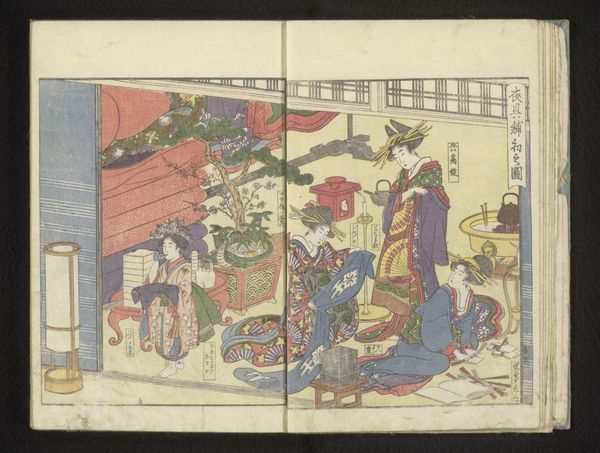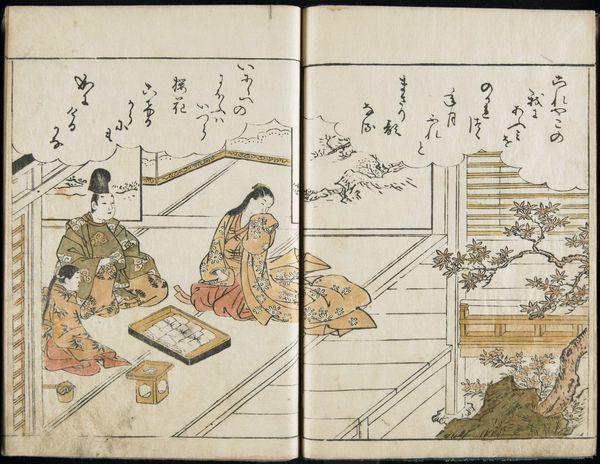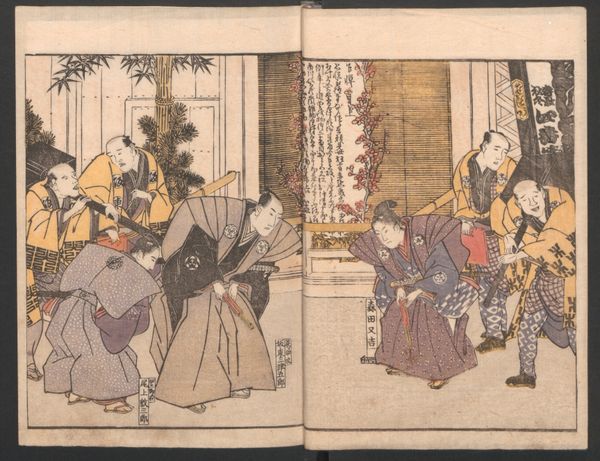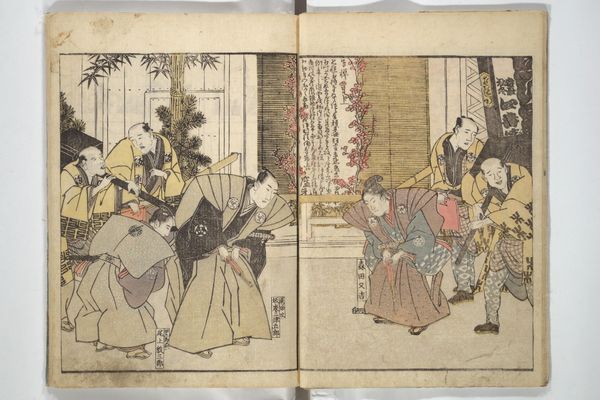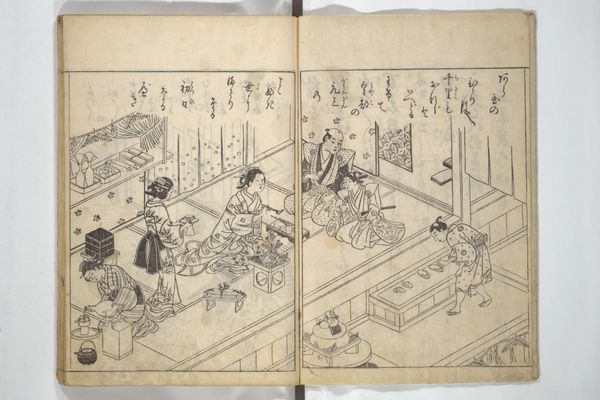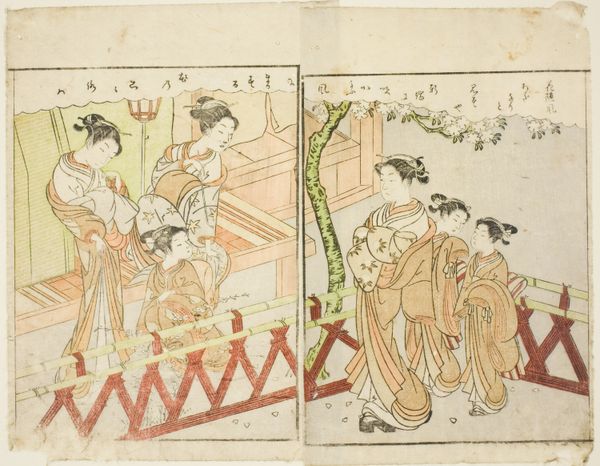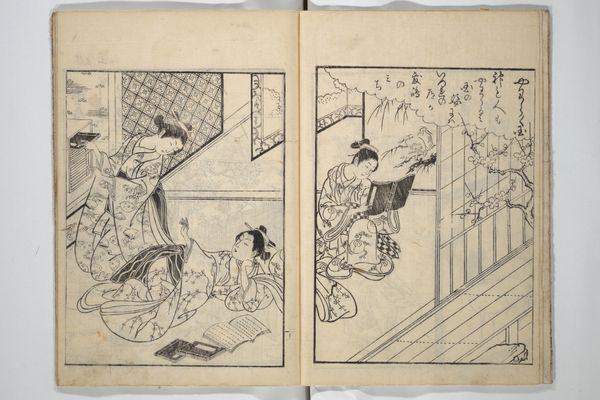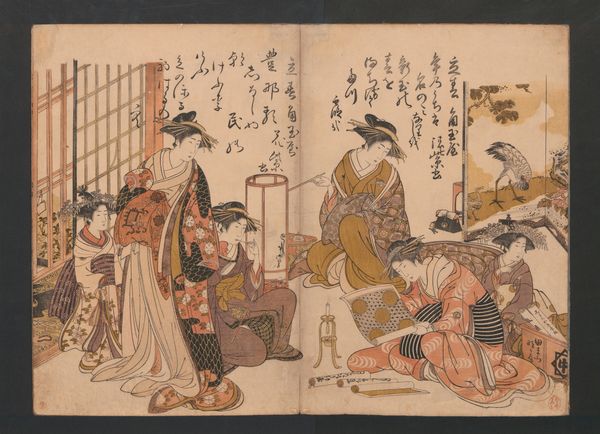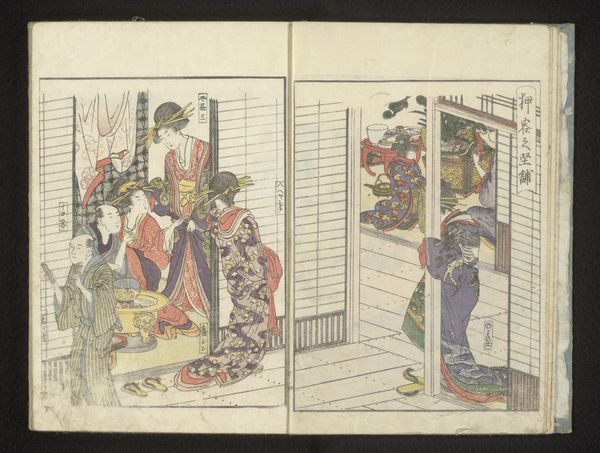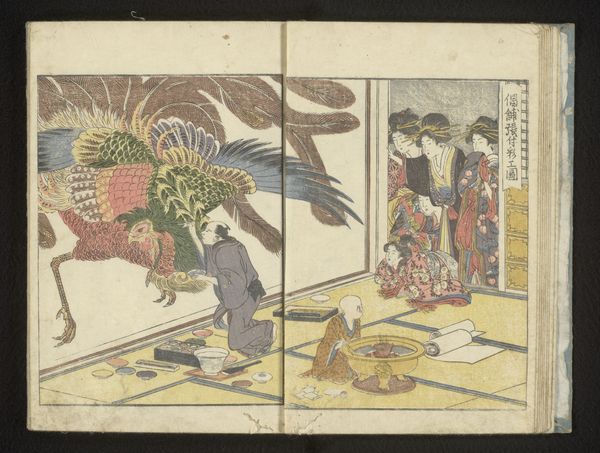
Picture Book- Field of Vines Possibly 1736
0:00
0:00
print, ink, woodblock-print
# print
#
book
#
asian-art
#
ukiyo-e
#
japan
#
figuration
#
ink
#
woodblock-print
#
genre-painting
Dimensions: 1/8 x 6 1/8 x 8 9/16 in. (0.3 x 15.6 x 21.7 cm)
Copyright: Public Domain
Editor: This delicate book print, "Picture Book- Field of Vines," possibly from 1736 by Nishikawa Sukenobu, offers an intimate glimpse into what seems to be an interior scene with figures. There's a striking stillness, almost a staged quality, despite the everyday activity. What do you see when you look at this artwork? Curator: I see a snapshot of gendered leisure and power dynamics within the Tokugawa period. Sukenobu, through the *ukiyo-e* tradition, is presenting a curated view of courtesans and their interactions. Notice how the women are actively engaged – serving, observing, displaying objects. How might their roles be both performative and representative of their social standing, or lack thereof? Editor: So, it’s less about a simple portrayal and more about what it says about their position in society? I assumed it depicted the everyday, mundane leisure activities. Curator: Precisely! The composition isn't just aesthetic; it's political. Consider the male figure – reclining, seemingly passive, but centrally positioned. Doesn't this contrast suggest a hierarchy of gaze and control? Are these women really "free," or are they performing a constrained version of femininity dictated by a patriarchal structure? How are they subjects of their own gaze, but also objectified for consumption? Editor: That makes me look at the work in an entirely different way! I didn't think about how the artist may want to highlight the gender disparity through visual language. I see it now! Curator: The objects surrounding the figures - tea sets, trays, robes - become markers of status, highlighting both privilege and commodification. This work reminds us to critically examine whose stories are told, how they’re told, and for whom, while thinking of the structures perpetuating inequity. Editor: I hadn't thought about reading an image this way. Now I appreciate the many layers of this "simple" domestic scene. Curator: Yes, these scenes carry multitudes and through an intersectional lens we can begin to unpack them.
Comments
No comments
Be the first to comment and join the conversation on the ultimate creative platform.
